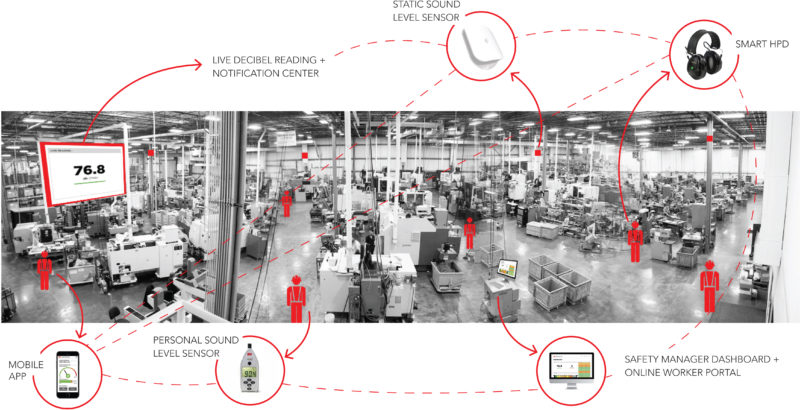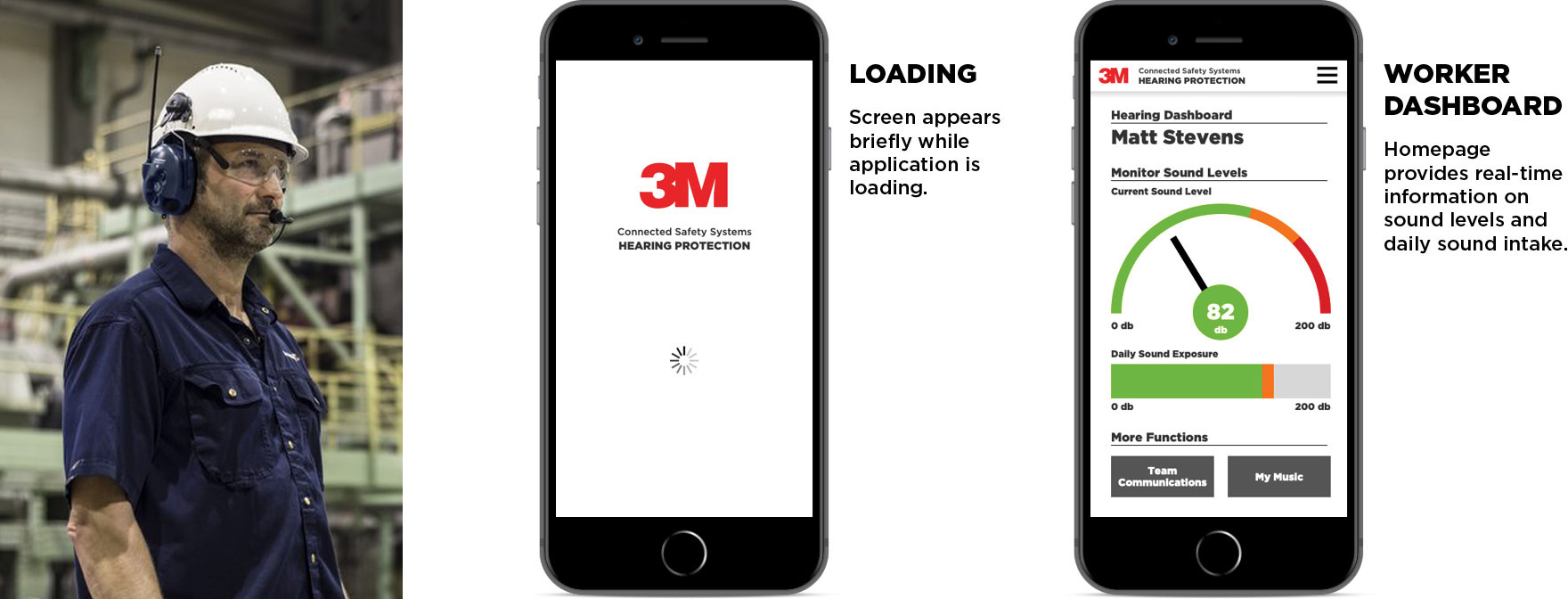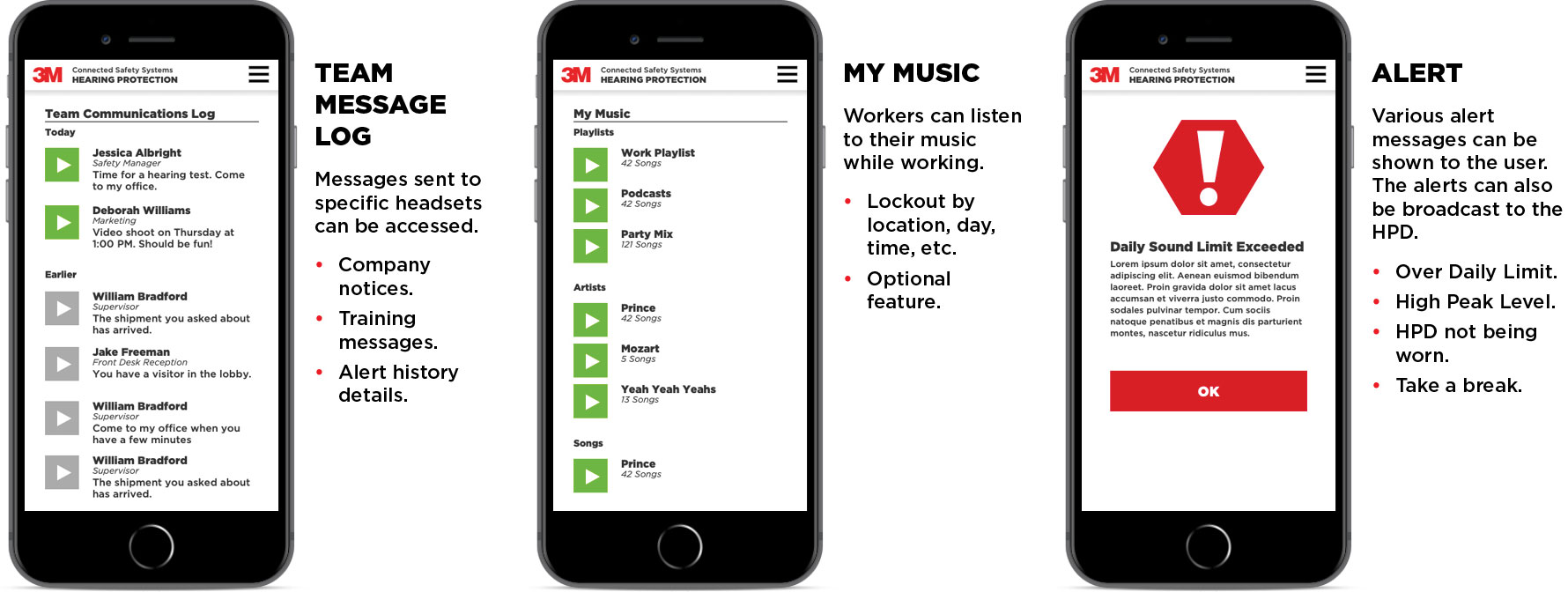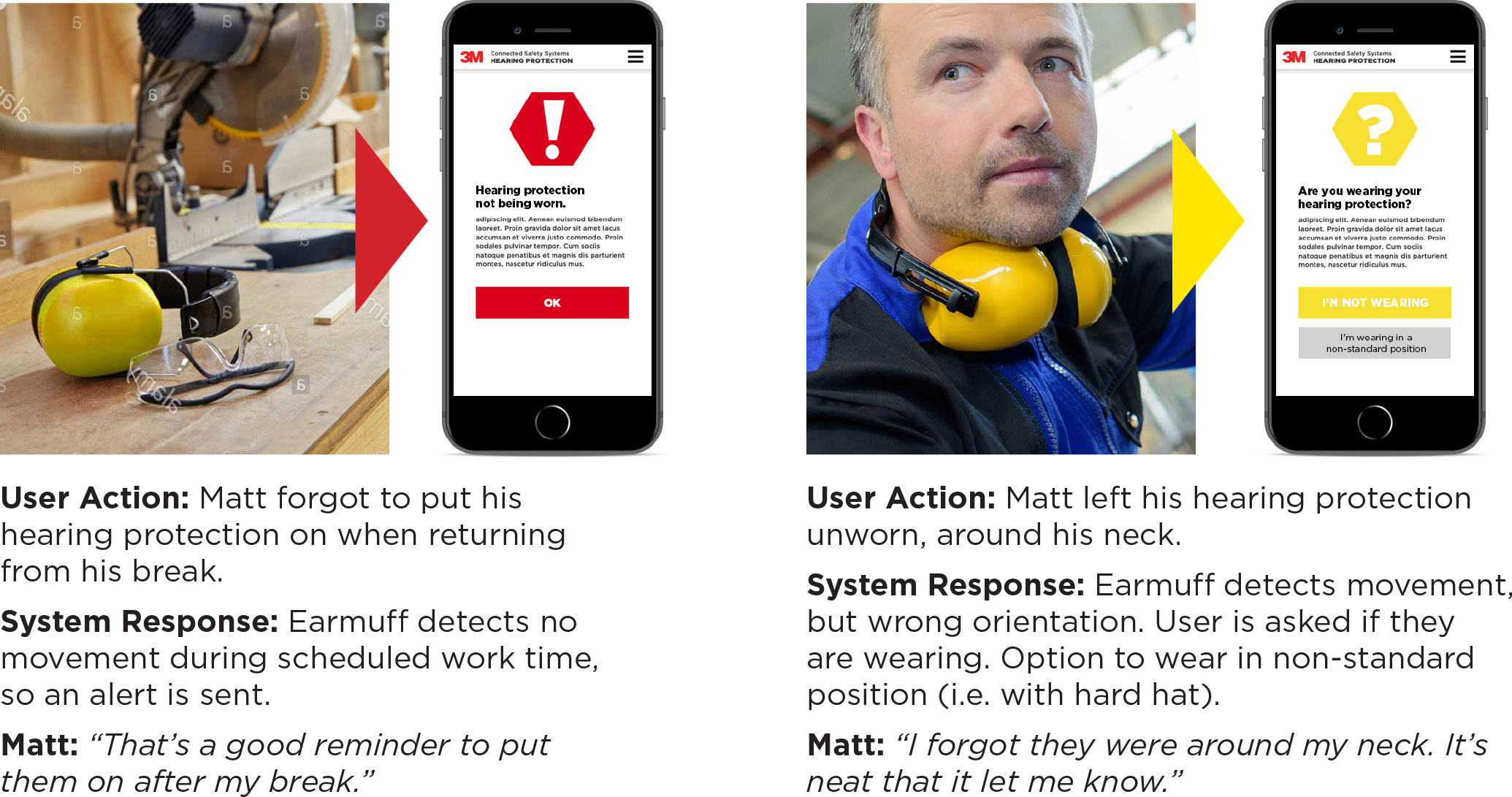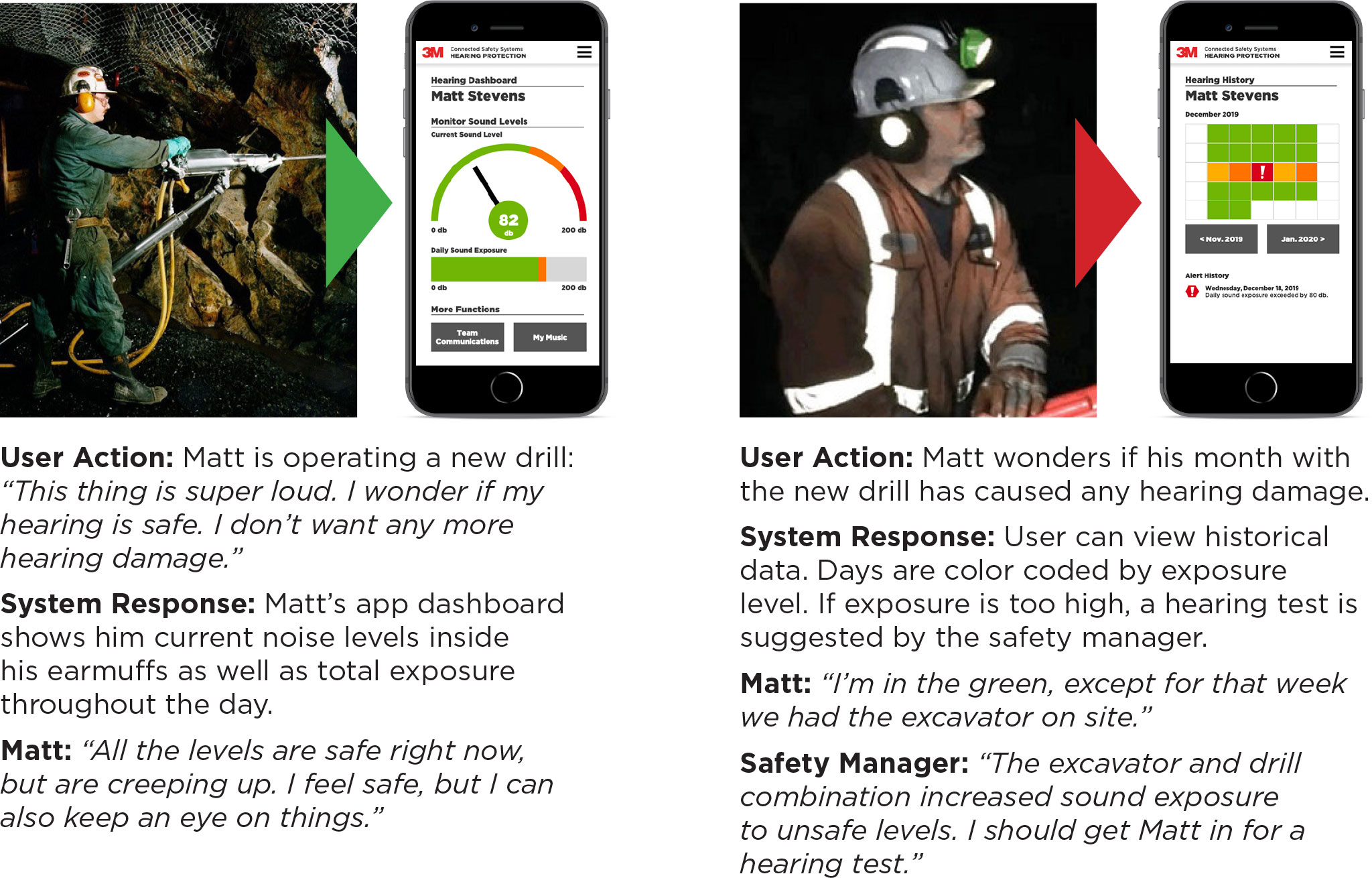UX CASE STUDY
3M Hearing Protection Ecosystem
Digitizing a connected environmental, physical and digital product ecosystem to ensure worker hearing protection.

Problem
My design team was tasked by 3M’s Safety & Industrial Division to explore the problem space around worker hearing protection. How might we develop a connected solution that could ensure an employee is protected while they are working?
Solution
The design team proposed a system of connected IoT products feeding data into a Safety Manager dashboard and companion worker app. I focused on creating worker scenarios and app feature prototyping.
Team: Research
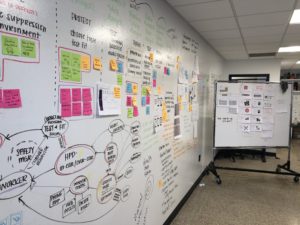
Due to the very short timeline, my design team conducted secondary research into the problem space using a divide and conquer approach, segmenting research areas by team member. We then discussed our key findings within the group and explored design possibilities.
Team: Solution
My team determined that a hearing protection ecosystem should revolve around the plant Safety Manager’s product experience in the form of a desktop/tablet based web application. The application would present a dashboard to the manager, with capability to monitor, review and document the hearing protection ecosystem.
 A secondary, but equally important consideration was the worker’s experience using the products. The worker’s IoT connected earmuffs could connect to an optional smartphone app, allowing them to monitor their own noise exposure, communicate with team members, participate in training and even listen to music when permitted.
A secondary, but equally important consideration was the worker’s experience using the products. The worker’s IoT connected earmuffs could connect to an optional smartphone app, allowing them to monitor their own noise exposure, communicate with team members, participate in training and even listen to music when permitted.
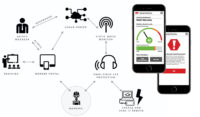 To make this system possible, a suite of products would work in union to transmit data to the dashboard. Some of these products already exist in 3M’s hearing portfolio, but would need to be enhanced with IoT connectivity, such as IoT earmuffs and handheld sound level meters. Some entirely new products would need to be developed, such as a wall-mount combination wi-fi hotspot/sound level monitor.
To make this system possible, a suite of products would work in union to transmit data to the dashboard. Some of these products already exist in 3M’s hearing portfolio, but would need to be enhanced with IoT connectivity, such as IoT earmuffs and handheld sound level meters. Some entirely new products would need to be developed, such as a wall-mount combination wi-fi hotspot/sound level monitor.
“IoT earmuffs would include external and internal decibel meters to measure sound exposure levels and an accelerometer to determine, based on user movement and product orientation, whether the muffs are being worn, and for how long.”

An opportunity often neglected by hearing protection solutions is that of environmental sound mitigation. By lowering overall sound levels, the need for hearing protection devices is reduced. Our plan leveraged the 3M portfolio of sound deadening products into new applications such as acoustic wall panels and blanket enclosures for very loud machines or zones.
My Focus: Worker Smartphone App
My contribution to prototyping the connected system was to develop the smartphone app experience. The main focus of the app is the worker dashboard, allowing them to monitor their own exposure to immediate sound threats and sound exposure over time.
The app alerts the user when hearing safety thresholds have been exceeded. The app also allows communication with team members and even music listening when permitted by management.
My Focus: Worker App Scenarios
To further refine the worker app experience, I created user scenarios to determine what functions might be added to the app to improve the worker’s safety and emotional well being. Also taken into consideration is how the IoT earmuff design properties might affect the experience.
User Story: Matt Stevens | 55 | Grandfather of 4
Matt, a veteran worker of 35 years, has learned that his hearing acuity is in decline after his latest company hearing test. He knows he has been too casual with wearing his hearing protection over the years and this has taken it’s toll. He now wishes to be more disciplined about wearing his hearing protection and wants to make sure he is adequately protected. It’s important to him to hear his grandchildren’s voices. His new IoT earmuffs and smartphone app will help him achieve his goals.
Scenario: “Breaking Bad Habits” Encouraging Matt to wear his hearing protection. Tech note: The IoT earmuffs incorporate an accelerometer to determine when the muffs are being worn by sensing natural human movement and vertical orientation of the muffs.
Scenario: “Reassurance” Matt wants to make sure his hearing is being protected. Tech note: The IoT muffs incorporate decibel level meters outside and inside the earpieces to measure noise exposure.
Appendix: Design Team Members:
- Kris Kathmann (Worker app prototype, worker scenarios)
- Maddi Wichert (Environment diagrams, documentation)
- Eli Eijadi (Earmuff prototype, stakeholder presentation script)
- Willie Stephenson (Safety manager dashboard prototype)
- Alan Jones (Connected experience diagrams; worker and safety manager)
